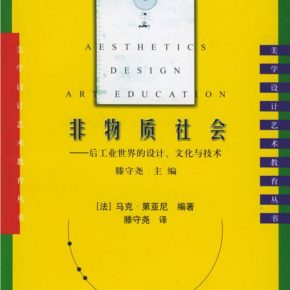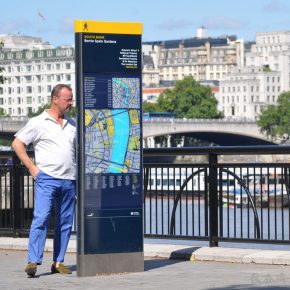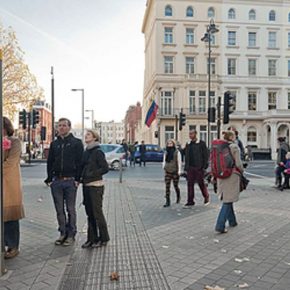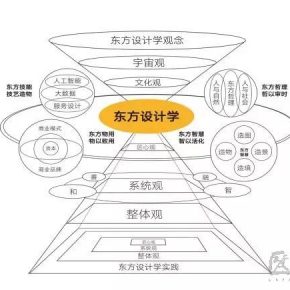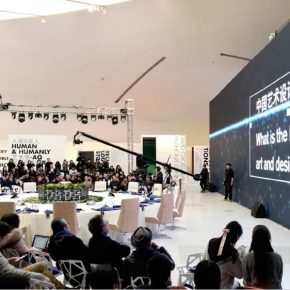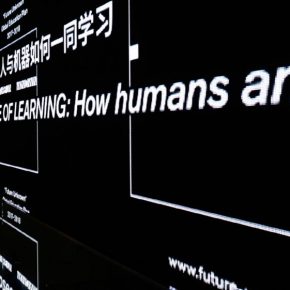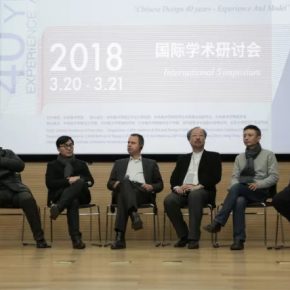
“Chinese Design 40 Years – Experience and Model” symposium is an opportunity to learn from experience and start exploring the future, with sound thoughts developing. On the one hand, some experts and scholars of design at home and abroad share their design cognition and practical experience based on this platform – their achievements and journey have constructed 40 years of Chinese design and the basic development vein of design education in China; Their practice and exploration have seen the basic features of Chinese design over the past 40 years. On the other hand, the design thinkers and advocates provide an opportunity for people who pay close attention to Chinese design to research, reflect and imagine. The future is bursting in the wake of generation after generation of designers. The rapidly changing situation in the design field is something that deserves our constant deliberation. Recalling “design” from the introduction to China to the gradual expansion of coverage, the creative nature of the design and its practical value may be worth repeating and discussing. It suggests that the participants in China's design and design education may be able to look back on the status quo that we are facing after a long journey to the West, starting with the basics of food, clothing and shelter in China, with the aim of solving problems and innovating in a way that can gradually transform the design pattern from a single creation to a system of architecture. Under the umbrella of the root of modern technology and business transformation, it is a good opportunity to merge the experience of all sides in an open view, cooperate with the “problem-led” mode of talent education and build a multi-level teaching platform. Thus relying on the contributions that can be made at the sociological and cultural levels to support economic and cultural development. In the alternation of thoughts, the connotation of the design transforms from the server to the innovator, and from an imitation to a dynamic creation becomes increasingly prominent. The vagaries of the time are astonishing, and the new technology and explosive information always overwhelm us. Perhaps some of the tireless vitality of design is a source of motivation to meet the challenges of the times. It is the most direct medicine for changing the shape of life, and it is the charm of its lustre.
From Patterns to Systems: The Transformation of Design Cognition
It is not an easy task to sum up experience. The significance of summing up experience is, on the one hand, to sort out the context of development and show the values that history can bring to people; On the other hand, it is more important to think of the foot as a new starting point, to open up a new exploration and discuss the future direction. The symposium “Chinese Design 40 Years – Experience and Model”and exhibition "Design for China" as opportunities to review the design process in China, as well as offer an opportunity for designers to learn from experience, break patterns from patterns, and explore new possibilities based on the nature of the design. So, what does it mean to talk about design all these years? Let's take a look at some of the changes that the word "design" has undergone. At the symposium, Lin Pansong, former vice-president and honorary professor of the Department of Design, Taiwan Normal University, shared some of the ancient Chinese language on design at the opening of "Designing the Strategies of the Warring States: the Cultivation scheme of Taiwan’s art and design talents". For example, "He bribed people around me. He set up a scheme to make me take venom"(The Three Kingdoms • Wei); “be careful, pay attention, theft is the point of the plan. "(Zeng Gong, Warring States policy, preface) In book Siku Quanshu appears more than 400 times, mainly referring to "scheming" and "tempting", but only a few times meaning "creations". Although the meaning of design in ancient text is derogatory, it also provides a little reflection on the introduction of design from the Japanese word “ishou” – perhaps the non-material systemic and sustainable strategic has been neglected by us. In an interview with Lou Yongqi, Dean of the College of Design and Innovation at Tongji University, also mentioned that, unlike "Design", which comes from the Italian word "Disegno”, the Chinese "design" may be more in line with the concept of systematic structure and creating system mechanisms. However, the design we often come into contact with is almost equivalent to that of the "creation", whose nominal meaning is more than systematic.
The word "Design" in the early 20th century was not clear in China. At that time, design corresponds to "pattern". The early design pioneer of our country Lei Guiyuan used "design" as "pattern" in the 1929 Shanghai Liangyou cover. In the mid-20th century, the term "applied arts" and “arts and crafts” were simply based on the artistic form of art, commonly referred to as "artwork". This is a far cry from the innovative approach to solve problems in a conscious and systematic way in the modern sense. Since the Reform and Opening, the transformation of the economic pattern and the development of technology have directly affected the way of thinking and lifestyle. The traditional academic category has gradually turned to a modern system. The design and education in China have also gradually taken off. After nearly half a century, "applied arts" was replaced by "art design" in the Ministry of Education's new catalog in 1998, and Chinese design schools have sprung up. It can be said that the consciousness of Chinese design gradually had opened up by this time because of the influence of foreign design and the joint exploration of participants in Chinese design and design education. The situation is also evolving, and it is possible to say that our current discussion and reflection are in the midst of a new wave of Chinese design. Each designer is the driving force behind the wave.
From a contemporary perspective, the demand for material goods is almost saturated, but the nature of solving problems by design has not changed. It is just that the complexity of issues that need to be addressed in the process of modernization is attempting to imply a shift in our thinking, with discussions on the implementation of the model of design, the extent of its scope and the value of society. On the one hand, the scope of the design has become more and more extensive, and the new value that it can present is increasing. On the other hand, there has been a shift in the design responsibility threshold. That is to say, from a simple design of a poster, a book, and a product to a structure around the creation and mechanism of the system. The transformation from "material" to "immaterial" is a reflection of the upgrading of design strategy. This "immaterial" innovation model should be closer to the contemporary and future forms of life featuring information, services and digital. However, "upgrade" may be probably one kind of "retro". Isn’t this systematic design thought that matches the design wisdom "scheming and tempting" in ancient Chinese?
Design and Immaterial Society are not new terms. Marco Diani, a French scholar, compiled a book 20 years ago that brought together a group of active intellectuals to discuss concepts and changes in the design, culture and technology of the post-industrial world, as well as what is the design of the "fringe zone" between art and science in immaterial society. As he said, “Design has always been between the poles that dominate our culture, the one between technological and industrial realities and the other with human-scale production and social utopia." We are still in the process of profound technological change, even more so than usual. Based on the new economic era of "immaterial dominance", the emphasis on the function and form of design in the past has naturally become the transformation of the relationship between the tangible product and abstract relations, whose restructure or refactor are both based on the human scale. That is to say, the content and elements that were originally concerned with making "things", including material, technology, process, equipment, appearance, decoration, packaging, etc., will gradually be integrated into the system and relationship. This kind of relationship or system is based on the observation and thinking of life, following the source of the problem, and adopting the systematic method of design to construct a whole-factor design mode from manufacture, circulation, usage and recovery. As Professor Liu Guanzhong from Tsinghua University emphasized in his report “Is it true that what we see with our eyes is reality?" at the symposium, establishing a social unity of "products-goods-supplies-waste". The design of "things" has not disappeared, but is unified in the loop.
This is reminiscent of the London government's project "the Legible London", an investigation since 1999 that launched in 2005. It is a "London system of traffic signs", re-imagined by government-led co-designers, city planners, business groups, and technology experts based on the origin of traffic system. This is not simply a visual road sign or guidance, but rather a problem-oriented public design scheme for the easing of traffic conditions, encouragement of walking, and promotion of sustainable development in assistance with the series of a digital map design, emotional visual design, community cultural platform design and more, which is, after a lot of research, a combination of a medieval street system, a dense subway system, and a variety of existing assets, land use and business form and other. Jan Gehl, a London-based urban design consultant, has set a goal of "making London a walkable global city" – a design is, so to speak, "alive” and not a result, is more like a "big show" involving public participation. Signs that say "5 minutes, 10 minutes, 15 minutes of walking circle plan", "walk in 300 steps, 700 steps to reach your destination" and so on, are probably the source that makes people who are shuttling through the city feel the humanistic care of design.
The system, which has been introduced in most cities in the UK and is also widely used in Europe and has seen a 16% reduction in pedestrian walking distance and a 23% in the number of people choosing to walk. It can be recognized that a reasonable design system has a social value directly related to the public. It is not overturning nor demolishing and reconstructing, but rather a rational reconstruction on an existing basis. "In the knowledge based society, art is increasingly seen as an important part of the national innovation system. A high-quality living environment is a basic civil right and a condition for spiritual well-being and welfare. Distinctive design and architecture that enhances national identity and a country's cultural image," said Professor Yrjö Sotamaa, Rector of University of Arts and Design Helsinki in Finland, referring to the Finnish government's new plan on architecture and design.
From passivity to initiative: what should Chinese design be
From manufacturing, appearance, brand, to strategic design, the path from “made in China” to “created in China” has not been built in an instant. As a symbol of China's social and economic development, Chinese design has more or less permeated the layout of the national strategy, economic and education industry. It is directly related to the life of every ordinary Chinese person. However, designers often experience that most people avoid understanding and communicating in a "I don't know" or "too deep" attitude even though the general public does not tend to avoid design or art-related objects. Alienated design is often referred to as "advanced" or "foreign", but it is actually the closest to people's lives, sharpening stone tools and production tools used by ancestors are the original design behavior prototype. We might as well analyze it from the perspective of modern design – a practice that addresses the use of demand, responds to the technology and materials of the time, and achieves a certain degree of standardization and aesthetics after many attempts – it is hard not to acknowledge that it was an innovative design activity at the time, and that its results were directed towards survival and life.
The reason why design is not widely used by the public is not just a few words that can make the situation clear. Several experts and scholars who have concerns about the design of people’s livelihood also mentioned relevant views in previous literature or this symposium. For example, Fang Xiaofeng, Editor-in-chief of the magazine Zhuangshi sponsored by Tsinghua University, "... as a designer, I am well aware that most people like to get involved in the design of the image of the country but do not pay attention to the minutiae of everyday life. This tendency is particularly prominent in our current design field." It is a little harsh but clear. He did not negate the efforts of many designers in the area of people’s lives, but there is just a longer road. "In general, the more we design for people’s lives, the more backward we are." At the meeting, the President of the Shandong University of Art and Design, Professor Pan Lusheng referred to the fact that the core of the new era strategy is "people-centered" in the symposium entitled "National Strategy & Native Design". To understand from the design point of view, it means not only a "focus on city life, concentration on industrial and commercial values", but also "making design practice deep at the grass-roots level, exploring the design countermeasure of improving people's livelihood, improving people's living conditions and improving people's life quality through design intervention."
"Design for people’s livelihood" is not a type and style, but a way of looking at design and thinking. It implies what design would do in terms of a national commitment to the improvement of people’s lives. The starting point of design is actually very direct, that is “small matter” concerned with the daily life of each person in respect of clothing, food and shelter. The famous British magazine, Focus invited 100 British leading experts and scholars and 1,000 readers to vote for the world's greatest invention in a century. The result was surprisingly a flushing toilet. Albeit amusing, but how can such an invention not be the best example of improving the lives of most ordinary people? In addition, as mentioned above, the "Legible London" project reaches the national government level as well as connects enterprises, groups, institutions and every city dweller. It has to be admitted that a good design plan is to contain a "big, medium and small" strategic pattern. The national image and people's interests are inseparable.
The situation and pattern of each country are not identical. It doesn’t have to be duplicated, but this approach to the design of models and systems for solving urban problems is worth analyzing. In order to change from "passive design" to "active design", the model foothold should be based on the present situation of China. It is also the beginning of the transformation of China's local designers from "designed" representational manufacturing to the exploration of Chinese lifestyle and the improvement of people's quality of life. For example, "oriental design" is an exploration paradigm, as mentioned at the symposium by Hang Jian, Vice-president of the China Academy of Art, and Wu Haiyan, Dean of School of Design & Art, China Academy of Art. The fully traditional or fully westernized model does not apply to China at present. The key to solving the problem is to open up the conscious awakening of Chinese cultural life values. The so-called "oriental design" is not clumsy drawing and outlining, but a construction of an open culture and core values based on modern technology that presents the charm of Chinese life. The charm of China's design and cultural confidence are also rooted in this.
Breakthrough and Innovation: A Long Way of Design Education
From the essence of design to the present situation of China's design field, the source of design innovation is the talent with innovation consciousness and innovative ability. Education is a country's foothold. Design education is closely linked to the challenges and opportunities faced by Chinese design. Times are changing. Design education, as a precursor to future challenges, must adapt to the demands of development and even advance the pre-set structure, because the concept and system of cultivating talent in design determines the vision and height of the design field in the future in China and even in the world to a certain extent, and the results of education directly influence the output quality of design talent and the breadth of construction in the future design area.
In the past, we sought to refine the direction of professional naming within a certain period in order to improve the institution-building of the whole discipline. However, there are no hard professional barriers based on the nature of the design solution. It is just that we look for solutions to solve problems in different ways. Nowadays, the voice of cross-professional and cross-field is flooding with a surge. When designing "things" becomes building "relationships", breaking through the traditional pattern which is based on discipline that becomes the inevitable trend: the original category of graphic design, industrial design and environment design may automatically expand to the height of the whole-factor system design such as "cultural pattern design", "lifestyle design", " environmental design", "urban sustainable design" and more. The model has been updated by several leading design schools in China, and it is understood that problem-oriented disciplinary patterns such as "service design research", "social innovation research" and "crisis design research". The dynamic power presented by cross-specialized design talent is worth looking forward to.
The core of the design education system and design field is centered around "people”. The change in thinking of design educators which education directly influences the renewal of educational models. Experts invited to the "Future of Education" discussion clashed with the idea "the first thing that should change is the educator" – "many university design professors don't have the right sense of design themselves, so how to teach students?" The shrill argument rang a warning: On the one hand, teachers have long ceased to be authoritative readers of books, and the role of teaching as a guide becomes inevitable. On the other hand, "teachers should be more active and learn more than their students". In the rapidly evolving information age, many teachers are less able to accept the new things that appear frequently for students in the post-90s and 00s. To grow up with their students becoming the new mission of the teachers who originally stand behind a podium.
The future we long for has arrived. In the ever-changing non-material era, the problems and challenges that China present in the present time are also constantly changing. When we see design as a social productive force, not only for a country's industrial and economic promotion, the construction of modern urban environment, but more importantly, for the shaping of the modern lifestyle and the humanistic spirit. After 40 years of wind and rain, Chinese design is gradually awakening from the role of the service providers, facing the real world to help solve China's livelihood and urban problems, building a quality lifestyle, developing its own creative competitiveness, setting out on its own design journey, and starting the next 40 years of truly Chinese design. Quoting from the beginning of the book The Immaterial Society: Design, Culture, and Technology in the Postmodern World, Diani pointed out the prophecy: “After the great debate on the nature and consequences of technology, the role of design will increase dramatically over the next few years.” And how wonderful the drama is, it remains to be seen.
Text by Zhang Yizhi, translated by Wei Yuluo and edited by Sue/CAFA ART INFO
Graphic/Refer to sources, all from the network unless otherwise specified
References:
Symposium speech:
- Liu Guanzhong:Is It True That What We See with Our Eyes Is Reality?
- Pan Lusheng: National Strategy and Native Design
- Hang Jian: When did Chinese modern design begin –time, significance & nature
- Wu Haiyan: The Cultural Pulse of Chinese Contemporary Design
- Lin Pansong: Designing the Strategies of the Warring States: the cultivation scheme of Taiwan’s art and design talents
- Lou Yongqi: Beyond Bauhaus: Tongji University’s Model of Design Education
Articles:
- Fan Di’an, Chinese Design 40 Years –Experience and Mode, Foreword, 2018-03
- Xu Ping, Dialogue Through Time and Space: On the Design of “Subjective Idealism” and the Eastern Human Tradition, A,Vision and Boundary: Art Design Research Collection, Jiangsu Fine Arts Publishing House, 2004-01
- Liu Guanzhong, "Philosophy"–Innovative Design Thinking, A, Energy Saving and Environmental Protection and Harmonious Development –Proceedings of the 2007 China Association of Science and Technology Annual Conference #2, 2007, 449-457
- Fang Xiaofeng, Brief Discussion about Design for People's Livelihood, J, 2008(10): 12-15
- Zhou Zhiyu,Reflections on Designing Basic Education, M] Foundation Course in Design, Peking University Press, 2007
- Yin Shuangxi, Design and Democracy, J, Art Journal, 2002(2): 7-10
- Marco Diani, The Immaterial Society: Design, Culture, and Technology in the Postmodern World, M, Sichuan People's Publishing House, translated by Teng Shouyao, 1998-03


